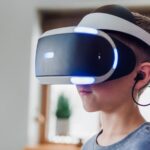
Exciting advancements in technology are revolutionizing the construction industry, and one of the most innovative tools making waves is augmented reality (AR). As a seasoned expert in the field, I’ve witnessed firsthand how AR is transforming the way construction projects are planned, executed, and visualized. With AR, construction professionals can overlay digital information onto the physical environment, allowing for enhanced collaboration, precise measurements, and streamlined workflows.
I’ll delve into the myriad benefits of incorporating augmented reality into construction processes. From improved project management to enhanced safety measures, AR has the potential to redefine the way we build. Join me as we explore the cutting-edge applications of AR in construction and discover how this technology is shaping the future of the industry.
Augmented Reality in Construction
Augmented reality (AR) is transforming the construction industry by enhancing project planning, execution, and visualization. As an industry expert, I’ve witnessed firsthand the significant benefits that AR brings to construction processes. The seamless integration of AR technology in construction projects leads to improved project management, heightened safety protocols, and more efficient workflows.
In construction, AR allows professionals to overlay digital information onto the physical environment, providing real-time insights and enhancing collaboration among stakeholders. For example, AR can superimpose building designs onto construction sites, enabling teams to visualize the end product accurately.
Benefits of Using Augmented Reality in Construction
Increased Efficiency and Productivity
Augmented reality in construction boosts efficiency by providing real-time data and visualizations, aiding in decision-making and reducing delays. It allows me to overlay digital models onto physical spaces, enabling quick assessments of progress and potential issues. By using AR, I streamline project workflows, identify discrepancies early on, and make informed adjustments promptly.
Enhanced Safety Measures
Incorporating augmented reality in construction significantly enhances on-site safety measures. With AR technology, I have access to critical information about potential hazards and safety protocols overlaid onto my surroundings. This empowers me to proactively address safety concerns, mitigate risks, and create a secure working environment for myself and my team.
Improved Communication and Collaboration
Augmented reality transforms communication and collaboration in construction projects. By leveraging AR tools, I can share real-time project updates, 3D models, and annotations with colleagues and stakeholders, regardless of their physical location. This fosters seamless collaboration, enhances decision-making processes, and ensures everyone is aligned on project goals. With AR, I can improve communication channels, resolve issues promptly, and achieve greater project efficiency through enhanced collaboration among team members.
Implementation of Augmented Reality in Construction Projects
Integration with Building Information Modeling (BIM)
In construction projects, integrating Augmented Reality (AR) with Building Information Modeling (BIM) revolutionizes the way architects, engineers, and contractors collaborate. BIM serves as a digital representation of a project, encompassing design and construction data. When combined with AR technology, BIM models come to life, overlaying digital information onto the physical environment in real-time. This integration enables stakeholders to visualize designs on-site, analyze spatial relationships, and identify clashes or conflicts early in the project lifecycle.
- Real-time Data Visualization: By merging AR with BIM, project teams can access up-to-date information, such as 3D models, schedules, and progress reports, directly on-site. This real-time data visualization enhances decision-making, fosters collaboration, and increases project efficiency.
- Enhanced Safety Measures: AR integrated with BIM provides critical information on potential hazards or safety issues at the construction site. Workers can receive alerts about unsafe conditions, access emergency procedures, and visualize safety zones, ensuring a secure working environment.
- Improved Communication and Collaboration: The combination of AR and BIM facilitates seamless communication among project stakeholders. Teams can share project updates, review design changes, and collaborate on 3D models, fostering better coordination and reducing errors during the construction process.
By leveraging the integration of AR with BIM, construction professionals can streamline project workflows, enhance safety standards, and improve overall project outcomes. Embracing this innovative technology is essential for staying competitive in the ever-evolving construction industry.









